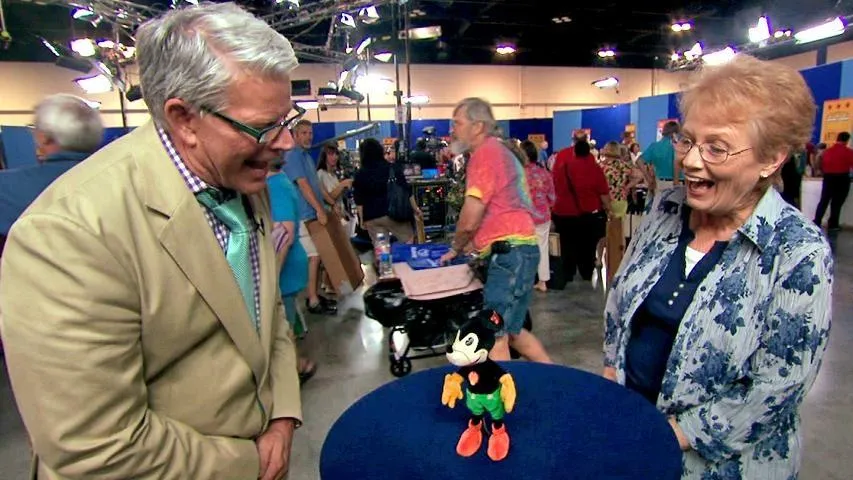GUEST: I've only had it for about 15 or so years. We had a house in the mountains, and we had some handymen coming to the house to help us refurbish it, and one of the handymen, when he saw that we were decorating it in an Adirondack Camp kind of style, he said that this had been in his closet for over 30 years, and he had gotten it from his parents, who had it for a long time. So he felt like, since it was just sitting in his closet, that we would do better to have it as a piece of decoration. So we bought it.
APPRAISER: What did you pay for it?
GUEST: $300.
APPRAISER: $300, okay. Let's talk a little bit about the Northern Plains in the United States in the latter part of the 18th century, the beginning of the 19th. The buffalo, which is what this is...
GUEST: Okay, good.
APPRAISER: ...was critical to the Indians' existence. It gave them shelter, it gave them food, it gave them warmth. And this is a buffalo robe.
GUEST: Oh!
APPRAISER: Now, robes can be in this form, geometric, and this design is called a box and border. They also can be historical documents-- that is, they can depict events, great battles, and that sort of thing.
GUEST: Oh.
APPRASIER: So we see that type. Now, what we look for when we see a piece like this and we want to authenticate it. There's certain things that we know a buffalo robe has to have to be authentic. Now, you're looking scared already.
GUEST: (laughs)
APPRAISER: We're going to go over some of that. First of all, when the buffalo is skinned and it's tacked out and it's dried and scraped, what you want to see is you want to see these holes, which you'll see on the perimeter all the way around, and it's tacked out.
GUEST: Oh, right, for the stretching thing.
APPRAISER: You want to see an example of brain tanning, so it has to be kind of scraped.
GUEST: Okay.
APPRAISER: When you see repairs like you do here, you want to see a sinew-- in other words, material made from the buffalo to sew it up.
GUEST: Oh, okay.
APPRAISER: Now, stylistically, this looks very good, so we're going to get to the point: is it real or is it not?
GUEST: Well, is it real?
APPRAISER: It's a fake.
GUEST: Okay.
APPRAISER: Remember I talked about these repairs?
GUEST: Uh-huh.
APPRAISER: They're done with cotton thread.
GUEST: Oh, okay.
APPRAISER: So this was made to look like sinew, but it really is meant to deceive. I don't think that this is brain tanned. I think this is tanned at home to make it look brain tanned.
GUEST: Okay.
APPRAISER: The design is close. So all of these elements go together and we say, "Okay, this is really not authentic."
GUEST: Okay.
APPRAISER: It's 20th-century in my judgment. On the decorative market, I think this piece is easily worth $1,000 to $2,000.
GUEST: Okay.
APPRAISER: All right?
GUEST: Yeah.
APPRAISER: These objects, even as decorator pieces, are pretty rare.
GUEST: Oh, okay.
APPRAISER: There's a very famous one that's a box and border that's just fabulous, And it's dated 1820 to 1840. Now, what do you think that one would be worth?
GUEST: (sighs)
APPRAISER: Well, it could easily hit seven figures.
GUEST: Sure.
APPRAISER: So you didn't hit the seven-figure lottery.
GUEST: (laughs)
APPRAISER: I apologize for that. But still, you're way ahead on your $300.
GUEST: Yeah, cool!
APPRAISER: And I think it's a fabulous piece.
GUEST: Thank you!



